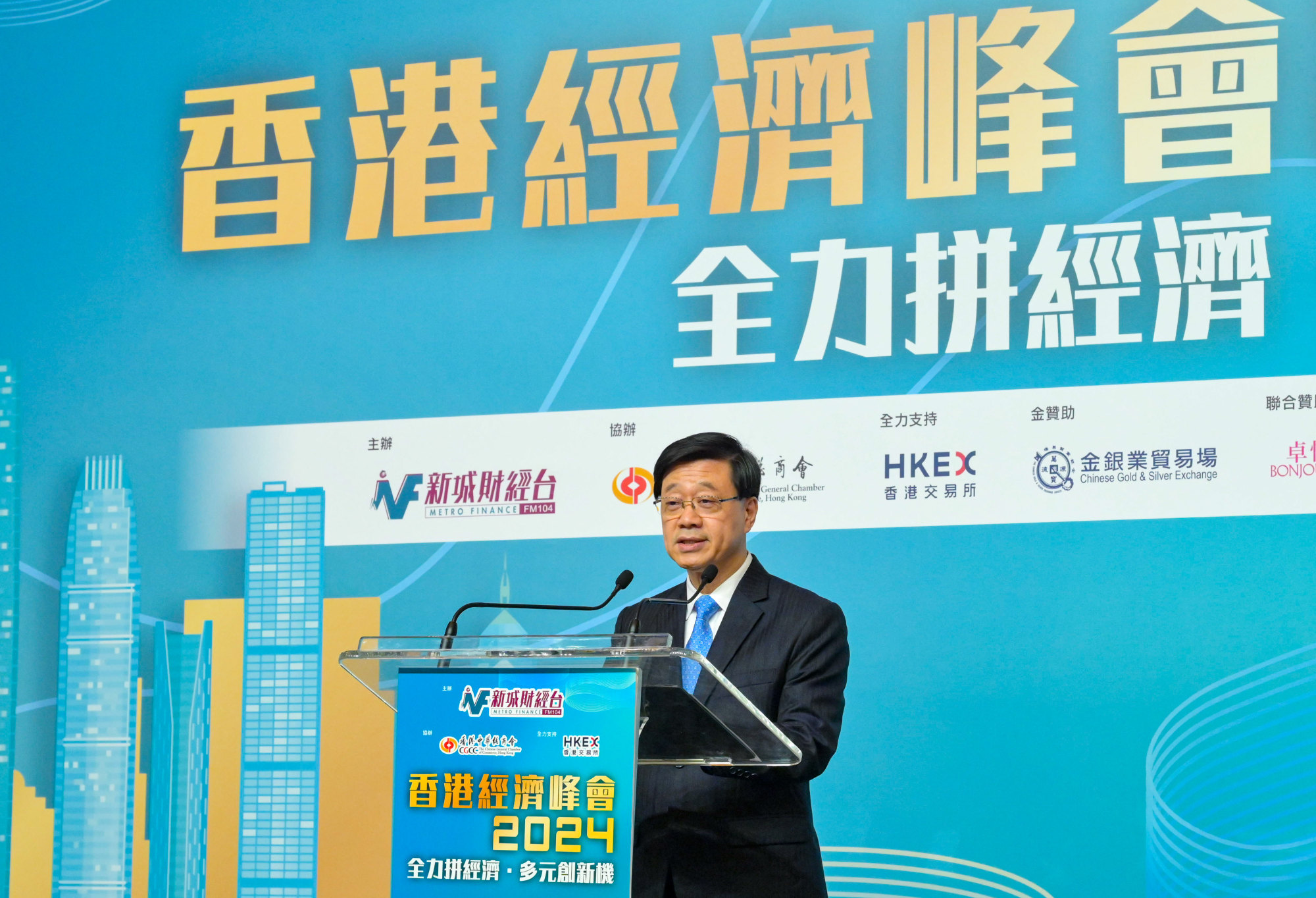Hong Kong’s John Lee urges residents not to talk down post-pandemic economy, calls for creative drive to get people spending
“I quote so many economic figures in one go because I want to remind everyone that Hong Kong maintains advantages in many areas,” Lee said. “We should not belittle ourselves.”
Hong Kong minister hits out at claims that city’s days as global finance hub are over
The city’s leader instead called on residents to make good use of the “strength, perseverance, flexibility and adaptability that Hongkongers are so well-known for, and use our innovation and creativity to create a better future”.
Lee also urged businesses to encourage local consumption through creative approaches targeted at the “90 per cent of Hong Kong people who stayed in the city and did not travel abroad”.
“Whether [consumers] attend nighttime activities and spend locally depends on the efforts of the industry,” he said.
“How do you increase attractiveness and make your content more diverse and interesting? What about our services? And how can we use our creativity to beat out our competitors?”

The call came as retail industry leaders said the sector had experienced a worse-than-expected rebound, pointing to changing tourism trends after the pandemic, particularly among visitors from mainland China, with a greater focus on cultural experiences over shopping.
Hong Kong Tourism Board executive director Dane Cheng Ting-yat told summit attendees on Monday that organisers behind major events, as well as local officials, could “do better” in terms of coordinating venues and dates.
“After borders reopened, we saw a sudden increase in demand for venues … a lot of major events were squeezed in around the same time,” he said.
Hong Kong economy still growing but gains marginal even with tourism boost
Cheng added that the city’s “weakness” was that “everyone wants to avoid the summer months, so autumn and spring months are in high demand”.
“Is there a way we can make things work, such as holding more of our own, smaller events in the summer, or making use of other spaces?” he asked.
The board’s executive director also touched on concerns that local concert venues lacked the capacity for overseas performers, citing American pop singer Taylor Swift’s decision to leave out Hong Kong during the Asian leg of her current tour.
“These large-scale concerts require massive spaces that can accommodate not just 10,000 to 20,000 people – we’re talking 40,000 to 50,000,” he said.
Why is Hong Kong missing out on Taylor Swift and other stars? Industry blames venues
Hong Kong’s main indoor concert venues include the AsiaWorld-Expo in Chek Lap Kok, which can host up to 14,000 people, as well as Star Hall in Kowloon Bay and the Convention and Exhibition Centre in Wan Chai that respectively boast 3,600 and 8,000 seats.
The city also has the Central Harbourfront Event Space, which can provide almost 387,500 sq ft of outdoor space.
Hong Kong Stadium in Kowloon has a maximum capacity of 40,000, but industry players had cited its proximity to residential areas as a potential issue and instead hoped a 50,000-seat venue being developed in Kai Tak could meet demand.